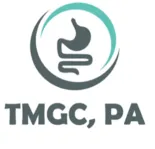A colonoscopy is prescribed by a doctor during a preliminary visit, a colonoscopy is a visual tool used for diagnosing and treating diseases of the large intestine
Colonoscopy Procedure
During a colonoscopy, a flexible tube as thick as a finger called a colonoscope is inserted into the anus and slowly advanced into the rectum and colon to examine the lining. You will lie on your side or back, and your doctor may administer a sedative to help you relax and better tolerate any discomfort.
A colonoscopy rarely causes much pain, though you might feel pressure, bloating or cramping during or after the procedure because of the air introduced into the colon during the examination. This should disappear quickly when you pass gas. You should be able to eat after the examination, but your doctor might restrict your diet and activities, especially after a polypectomy.
Although the procedure usually takes 15 minutes to an hour, you should plan on two to three hours for waiting, preparation and recovery. After the procedure, your physician will explain the results of the examination and when you might expect results of any biopsies performed.
If you have been given sedatives during the procedure, someone must drive you home and stay with you. Even if you feel alert after the procedure, your judgment and reflexes could be impaired for the rest of the day.
Colonoscopy Preparation
Your doctor will explain any dietary restrictions and a cleansing routine to follow before your procedure. In general, the preparation consists of either consuming a special cleansing solution or clear liquids and special oral laxatives. The colon must be completely clean for the procedure to be accurate and complete, so be sure to follow your doctor’s instructions carefully.
Most medications can be continued as usual, but some can interfere with the preparation or the examination. Inform your doctor about medications you’re taking, particularly:
- Aspirin products
- Arthritis medications
- Anticoagulants (blood thinners)
- Insulin
- Iron products
Be sure to mention any allergies you have to medications. You should also alert your doctor if you require antibiotics prior to dental procedures, as you might need them before a colonoscopy as well.
Additional Procedures
Biopsy
If your doctor thinks an area needs further evaluation, he or she might pass an instrument through the colonoscope to obtain a biopsy (a sample of the colon lining) to be analyzed. Biopsies are used to identify many conditions, and your doctor might order one even if he or she doesn’t suspect cancer.
Polypectomy
Your doctor might also find polyps during colonoscopy, and he or she will most likely remove them during the examination. Polyps are abnormal growths in the colon lining that are usually benign (non-cancerous). They vary in size from a tiny dot to several inches. Because cancer begins in polyps, removing them is an important means of preventing colorectal cancer.
Polyps are removed with either biopsy instruments or by passing an electrical current through small wire loops called “snares,” a procedure that should be pain free.
Polyps known as “hyperplastic” might not require removal, but benign polyps known as “adenomas” are potentially pre-cancerous. Your doctor can’t always tell a benign polyp from a malignant (cancerous) polyp by its outer appearance, so he or she might send removed polyps for further analysis.
Colonoscopy Risks
Colonoscopies and polypectomies are generally safe procedures when performed by specially trained and experienced doctors. Possible complications include:
- A perforation or tear through the bowel wall could occur, which then may require surgery
- Minor bleeding at the site of a biopsy or polypectomy, which may stop on its own or be controlled through the colonoscope, both rarely requiring follow-up treatment
- A reaction to the sedatives
- Complications from heart or lung disease
If a colonoscopy is being performed to identify sites of bleeding, your doctor might control the bleeding through the colonoscope by injecting medications or by coagulation (sealing off bleeding vessels with heat treatment). Both of these procedures are usually pain free.
Although complications after a colonoscopy are uncommon, it’s important to recognize early signs of possible complications. Contact your doctor if you notice any of the following symptoms:
- Severe abdominal pain
- Fever and chills
- Rectal bleeding of more than one-half cup (bleeding can occur several days after the procedure)

